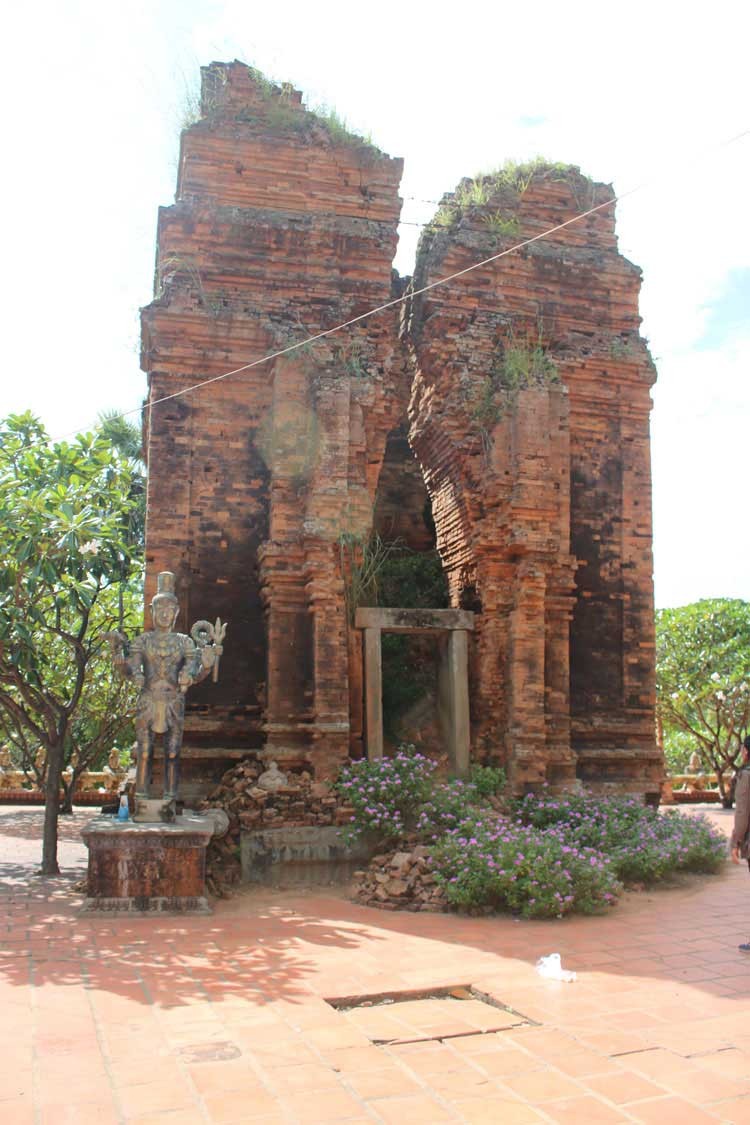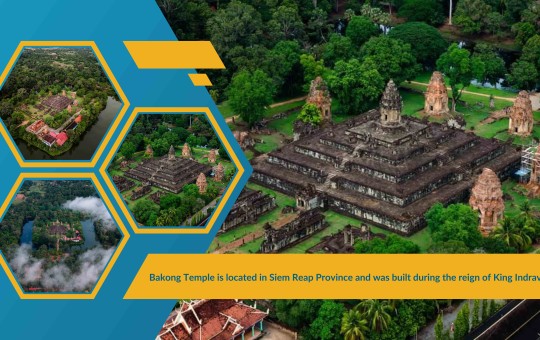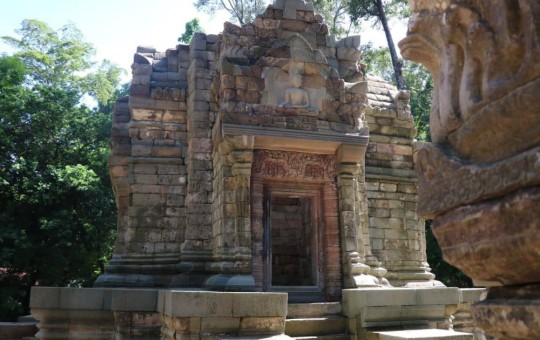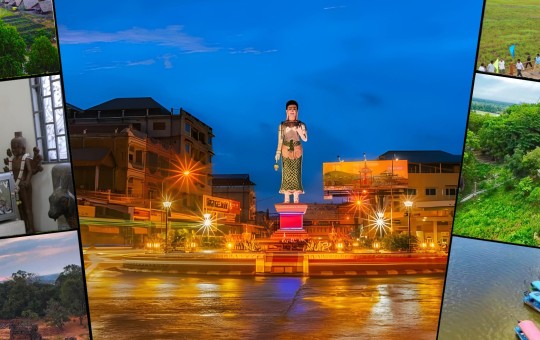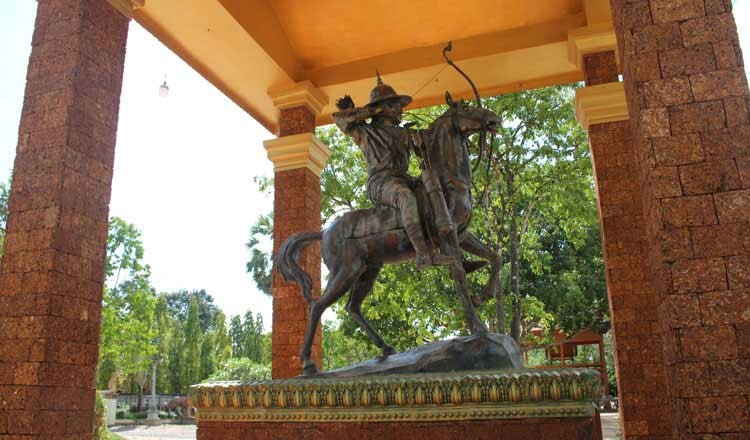
The lair of Cambodia’s Dragon King
In Tboung Khmum province’s Ponhea Krek district, some 40km from the provincial town of Kampong Cham is a Buddhist monastery known as Wat Prey Nokor Knong.
To residents of the area, the pagoda is their gathering hub during major celebrations such as Khmer New Year and Pchum Ben.
For city folks, it is a serene, peaceful place to seek relaxation.
But for those who study Cambodia’s history, it was once the centre of the mighty kingdom.
Just after the gate of Wat Prey Nokor Knong is a bronze statue of a noble-looking man shooting an arrow astride a huge horse. On the pedestal of the free-standing sculpture is a sign that reads “Hluang Preah Sdach Korn”.
“This is the statue of King Korn, a monarch who ruled Cambodia from 1512 to 1525,” says Mom Kosal, the chief monk at Wat Prey Nokor Knong. “I heard he was the only king in history to have his capital here.”
Despite being recognised as a monarch, King Korn, whose official title was ‘Srei Chetha Thireach Reameathiptei’, had no royal blood in his veins. He was a commoner who dethroned his predecessor and attempted to establish a new dynasty.
Although he failed to realise his ambition, King Korn was one of the most interesting figures in the country’s history, thanks to an intriguing legend.
According to the book Moha Boros Khmer (The Magnificent Man of Khmer), written by Eng Soth, a Cambodian historian, in 1505, Korn, who was at that time a commoner living in a pagoda, was given a high position and the title “Hluang Preah Sdach Korn” by King Srey Sokun Bot after Korn’s elder sister, Bopha, became the king’s favourite consort.
Korn’s sudden rise in social class dissatisfied many senior officials though.
One night in 1508, during his sleep, King Srey Sokun Bot had an awful dream about a “naga” (a mythical creature in Khmer culture known as dragon) attacking his kingdom. The creature spat fire all over his kingdom and carried the royal parasol, the symbol of the Khmer monarchy, to the east.
The next day, the king asked his royal fortune-teller to explain his dream. The oracle told him that an enemy, born in the Year of the Dragon, “would bring disaster to the land”.
The enemy, the oracle said, was Korn, the king’s brother-in-law.
Fearful that Korn would seize his throne one day, King Srey Sokun Bot plotted to kill Korn. But Korn was able to escape, tipped off by a letter from his sister who knew about the plan.
Korn fled to Ba Phnom district in Prey Veng province.
Angered by the unfair treatment, Korn used his influence to gather an army and waged war against the king. The conflict lasted for four years and resulted in Korn’s victory and the murder of King Srey Sokun Bot.
In 1512, Korn crowned himself the King of Cambodia at the age of 29.
Two years later, he moved his capital to a place in Tboung Khmum known as Sralab.
Korn built his palace on the site known as Wat Prey Nokor Knong. He ordered the construction of a strong fence to protect his palace and barrack, as well as a large reservoir for irrigation purposes.
He named his new capital Sralab Dauntey Prey Nokor.
According to Michel Tranet, a Cambodian historian and author of King Korn’s Chronicle, the king wanted a new capital to cement the new dynasty he wished to create.
Tranet said the way Korn selected his capital was inspired by a dream.
“According to historical records, King Korn had a dream about a sage telling him to settle his new capital at Sralab for prosperity,” Tranet says. “It is superstition, but historical accounts and evidence prove that his reign was a glorious one.”
Tranet said that in a space of three years, the number of people of Sralab Dauntey Prey Nokor increased by “10 times”.
King Korn had been promoting trade in his kingdom, and even minted silver and gold coins, bearing the image of a naga, to facilitate transactions.
Many historians, including the prominent Professor Sambo Manara, named him the first to introduce money to Cambodia. The king also reduced the taxes that his people had to pay.
But, the peace did not last long, as another civil war broke out in 1516, this time between King Korn and Prince Chan Reachea, younger brother of the late King Srey Sokun Bot, who received support from the King of Siam.
After about 10 years of fighting, King Korn lost the war, and along with his queen, was executed. Their heads were shown to the public as a warning while Sralab Dauntey Prey Nokor was raided and torn down.
The re-discovery of the forgotten capital
Centuries after the end of King Korn, the exact location of Sralab Dauntey Prey Nokor remained unknown although historians have known that it was in Tboung Khmum.
In 2000, Ros Chantrabot, the country’s leading expert in history, led a research team to pinpoint the exact location of the former capital.
“No researcher or historian had confirmed its exact location,” Chantrabot writes. “In various studies, historians relied on secondary sources rather than going there to find out themselves.”
Chantrabot and his team used various methods, including interviewing the elder folks and conducting a comparative study of the geographical landscape.
They finally confirmed that Wat Prey Nokor Knong was indeed the ancient capital of King Korn. Only several ancient temples remain there while the reservoir is still visible.
Chantrabot dismissed the claim that King Korn moved his capital here simply because of a dream.
“The territories in the eastern part (of Cambodia) had all the potential that drove the development of Khmer society from the past until today,” he wrote. “The advantages of this capital were not realised by the kings who ruled after King Korn. After King Korn’s death, the city was abandoned and forgotten until the end of the 20th Century.”
